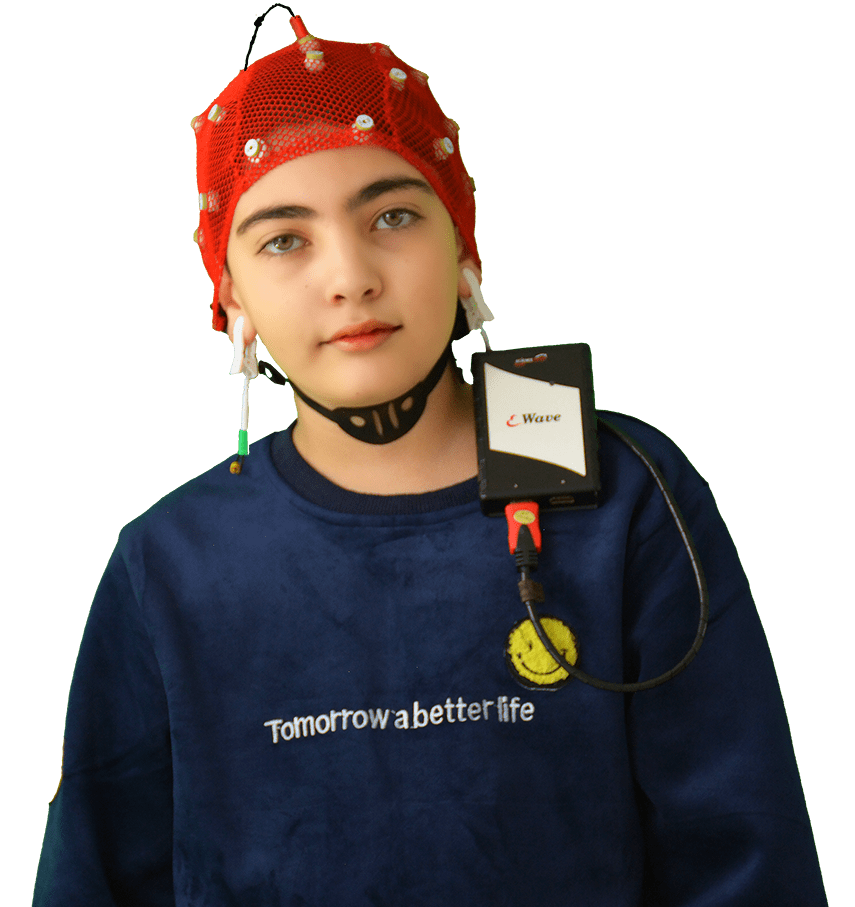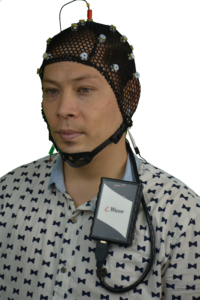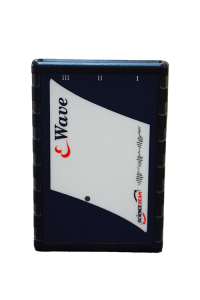what is a neurofeedback equipment?
Introduction:
Neurofeedback, also known as EEG (Electroencephalography) biofeedback, is a non-invasive technique that enables individuals to regulate and optimize brain function. This therapeutic approach has gained prominence in various fields, including psychology, medicine, and sports performance. Central to the effectiveness of neurofeedback is the sophisticated equipment designed to monitor and provide real-time feedback on brainwave activity. In this comprehensive exploration, we delve into the various components and advancements in neurofeedback equipment, its applications, and the potential future developments shaping this rapidly evolving field.
historical perspective of neurofeedback equipment
The roots of neurofeedback can be traced back to the mid-20th century, with the pioneering work of researchers such as Joe Kamiya and Barry Sterman. Early neurofeedback equipment consisted of basic analog systems that could detect and display electrical brain activity. Over the years, technological advancements have revolutionized neurofeedback equipment, transitioning from analog to digital systems, enhancing precision, and expanding the scope of applications.
1. Early Pioneers (1960s):
- The roots of neurofeedback can be traced back to the 1960s when researchers like Joe Kamiya and Barry Sterman conducted groundbreaking experiments. Kamiya’s work demonstrated that individuals could learn to control their brainwave activity consciously, leading to the conceptualization of neurofeedback.
- Initial neurofeedback equipment was rudimentary, consisting of analog amplifiers and basic visual displays that allowed individuals to observe their brainwave patterns in real-time.
2. Analog Era (1970s-1980s):
- The 1970s and 1980s marked the analog era of neurofeedback. Early equipment primarily utilized analog amplifiers and simple visual feedback displays.
- Researchers and clinicians started exploring neurofeedback applications for conditions like epilepsy and attention disorders during this period.
- The simplicity of these systems limited the specificity and precision of neurofeedback interventions.
3. Transition to Digital (1990s):
- The advent of digital technology in the 1990s marked a significant turning point in the evolution of neurofeedback equipment.
- Digital amplifiers replaced analog counterparts, offering improved signal processing capabilities and greater flexibility in adjusting filtering parameters.
- Real-time data processing became more feasible, enabling more sophisticated feedback mechanisms.
4. Integration of Computers (2000s):
- The 2000s witnessed the integration of computers into neurofeedback systems. This allowed for more advanced signal processing and the development of user-friendly software interfaces.
- Researchers and practitioners could now customize protocols, and the introduction of quantitative EEG (qEEG) analysis facilitated a more nuanced understanding of brainwave patterns.
5. Advancements in Feedback Mechanisms (2010s):
- The 2010s brought about advancements in feedback mechanisms, with the incorporation of virtual reality (VR) and gamification.
- Visual and auditory feedback became more engaging and immersive, enhancing the user experience and compliance during neurofeedback sessions.

Components of Neurofeedback Equipment:
Electroencephalography (EEG) Sensors:
- EEG sensors are fundamental to neurofeedback, capturing electrical signals produced by the brain.
- Modern sensors use a variety of electrode types, including dry and wet electrodes, providing flexibility in application and comfort for the user.
Amplifiers:
- Amplifiers increase the weak electrical signals from EEG sensors, ensuring accurate measurement.
- High-quality amplifiers contribute to the signal-to-noise ratio, enhancing the reliability of neurofeedback training.
Signal Processing Units:
- Digital signal processing units process the raw EEG data, filtering out unwanted noise and artifacts.
- Advanced algorithms analyze brainwave patterns, extracting relevant information for feedback purposes.
Feedback Mechanisms:
- Visual and auditory feedback mechanisms present real-time information to the individual undergoing neurofeedback.
- Advances in virtual reality (VR) and gamification have introduced more engaging and immersive feedback experiences.
Software Interface:
- User-friendly software interfaces allow practitioners to customize neurofeedback protocols based on individual needs.
- Cloud-based solutions enable remote monitoring and data storage, facilitating collaborative and longitudinal studies.
Applications of Neurofeedback Equipment:
Clinical Settings:
- Neurofeedback is widely used in clinical settings to treat various neurological and psychological disorders, including ADHD, anxiety, and PTSD.
- Personalized protocols target specific brainwave patterns associated with the individual’s symptoms.
Sports Performance:
- Athletes utilize neurofeedback to enhance focus, concentration, and performance under pressure.
- Training protocols aim to optimize brainwave patterns associated with peak cognitive and emotional states.
Cognitive Enhancement:
- Beyond clinical applications, neurofeedback is explored for cognitive enhancement in healthy individuals.
- Research investigates the potential of neurofeedback in improving memory, attention, and overall cognitive function.
Peak Performance in Work and Education:
- Neurofeedback is applied in corporate and educational settings to boost productivity and learning outcomes.
- Customized programs target specific cognitive functions relevant to the demands of the workplace or academic environment.

Advancements in Neurofeedback Equipment:
Quantitative EEG (qEEG):
- Integration of qEEG allows for a more precise analysis of brainwave patterns, enabling targeted interventions.
- Statistical comparisons with normative databases enhance the diagnostic and treatment capabilities of neurofeedback.
Real-Time Connectivity:
- Neurofeedback systems with real-time connectivity enable immediate adjustments to protocols based on ongoing brainwave activity.
- This feature is particularly valuable for adapting interventions in dynamic environments or during fluctuating cognitive states.
Neuroimaging Integration:
- Combining neurofeedback with neuroimaging techniques, such as functional magnetic resonance imaging (fMRI), provides a more comprehensive understanding of brain function.
- The integration of multiple modalities enhances the specificity and effectiveness of neurofeedback interventions.
Wearable Neurofeedback Devices:
- Miniaturization of EEG sensors has led to the development of wearable neurofeedback devices.
- These devices offer portability and accessibility, allowing individuals to engage in neurofeedback training outside traditional clinical settings.
Challenges and Future Directions:
Neurofeedback, while showing great promise in various applications, is not without its challenges. As the field continues to evolve, addressing these challenges becomes crucial for realizing the full potential of neurofeedback. Simultaneously, exploring future directions opens up exciting possibilities for enhancing the effectiveness, accessibility, and ethical considerations of neurofeedback equipment.
Challenges:
1. Standardization and Regulation:
- Challenge: Neurofeedback lacks standardized protocols and regulatory oversight, leading to variations in practices and quality of interventions.
- Implications: Inconsistent standards hinder the comparison of results across studies and raise concerns about the safety and efficacy of neurofeedback interventions.
- Solution: Establishing evidence-based guidelines and regulatory frameworks to ensure consistent practices and the development of a unified standard for neurofeedback.
2. Individualized Protocols:
- Challenge: One-size-fits-all protocols may not be optimal, as individual responses to neurofeedback interventions can vary significantly.
- Implications: Lack of personalization may limit the effectiveness of neurofeedback for certain individuals or conditions.
- Solution: Utilize advancements in machine learning and neuroimaging to develop more individualized protocols based on the unique neurobiological profiles of each user.
3. Accessibility and Affordability:
- Challenge: High costs and limited accessibility to neurofeedback equipment restrict its availability to a broader population.
- Implications: Socioeconomic disparities can impact access to neurofeedback interventions, limiting their reach and potential benefits.
- Solution: Develop more cost-effective neurofeedback solutions, explore telehealth options, and advocate for increased insurance coverage to enhance accessibility.
4. Integration with Conventional Treatments:
- Challenge: The integration of neurofeedback with traditional therapeutic approaches is not always seamless.
- Implications: Lack of collaboration between neurofeedback practitioners and other healthcare professionals may hinder holistic patient care.
- Solution: Foster interdisciplinary collaboration, encourage communication between practitioners, and conduct research to identify effective integrative approaches.
Future Directions:
1. Personalized Medicine and Neurofeedback:
- Opportunity: Harness advancements in genetics, neuroimaging, and personalized medicine to tailor neurofeedback interventions to an individual’s unique neurobiology.
- Potential Impact: Enhanced treatment outcomes and increased efficacy by addressing the specific neural mechanisms underlying each person’s condition.
2. Real-Time Connectivity and Adaptive Protocols:
- Opportunity: Develop neurofeedback equipment with real-time connectivity, enabling adaptive protocols that adjust in response to the user’s changing brainwave patterns.
- Potential Impact: Improved effectiveness by dynamically tailoring interventions to address moment-to-moment variations in brain activity.
3. Wearable and Home-Based Solutions:
- Opportunity: Further develop and refine wearable neurofeedback devices for home use, promoting accessibility and continuity of care.
- Potential Impact: Increased convenience for users, expanded reach of neurofeedback interventions, and opportunities for long-term monitoring.
4. Ethical Considerations and Data Security:
- Opportunity: Establish clear ethical guidelines regarding user consent, data storage, and privacy in neurofeedback practices.
- Potential Impact: Building trust among users, ensuring the responsible use of neurofeedback data, and addressing ethical concerns related to the technology.
5. Advancements in Neuroimaging Integration:
- Opportunity: Continue exploring the integration of neurofeedback with advanced neuroimaging techniques, such as fMRI, for a more comprehensive understanding of brain function.
- Potential Impact: Fine-tuned interventions based on both EEG and imaging data, contributing to a deeper understanding of the neural mechanisms underlying various conditions.
In navigating the challenges and embracing future directions, the field of neurofeedback holds the promise of revolutionizing mental health treatments, optimizing human performance, and contributing to our understanding of the complex interplay between brain function and behavior. As researchers, practitioners, and policymakers work collaboratively, the potential for neurofeedback to make a meaningful impact on individuals’ lives continues to grow.
Conclusion:
Neurofeedback equipment has evolved from its humble beginnings to become a sophisticated and versatile tool with applications across various domains. As technology continues to advance, neurofeedback holds promise for revolutionizing mental health treatments, optimizing human performance, and contributing to our understanding of the complex interplay between brain function and behavior. However, ongoing research, standardization efforts, and ethical considerations are crucial to unlocking the full potential of neurofeedback in enhancing human well-being.


